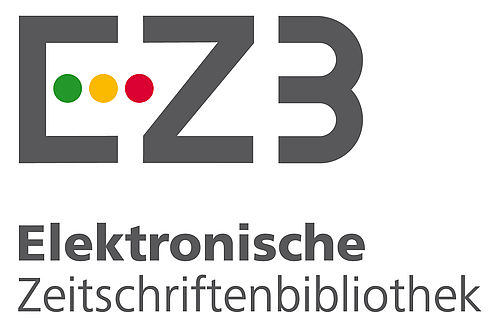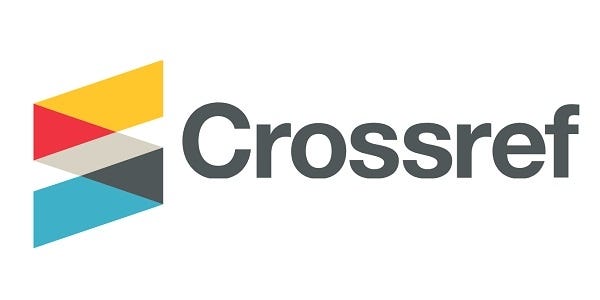Differences between the feeding of hydroponically grown curly vegetables with postbiotic free nutrient solution and ATAGREEN postbiotic supplemented nutrient solution with probiotics.
Abstract
This article presents a comparative analysis of the efficacy of two cultivation methods for curly crops: one involving the use of a probiotic-derived ATAGREEEN postbiotic-added nutrient solution, and the other relying on a nutrient solution without postbiotic. The analysis is supported by a comprehensive presentation of the experimental design, methodology, and results, as well as illustrative images. This study is discussed in detail under the following headings: basic principles of hydroponic agriculture, curly growing and its characteristics, the role of postbiotics in agriculture, the use of postbiotics in hydroponic agriculture, experimental design and methods, results and findings, analysis and interpretation of results, presentation of methods and results, discussion and recommendations. The experimental design is centred on the cultivation of curly plants in a hydroponic environment, with and without the addition of ATAGREEN postbiotic nutrient solutions. The methodology employed in the experiment, the cultivation conditions for the plants, the preparation of the nutrient solutions and the care of the plants were all determined in great detail. Furthermore, the experiment was designed to include a defined duration, measurement intervals, and data collection techniques. The results of the experiment demonstrated that the ATAGREEN postbiotic-supplemented nutrient solution exhibited notable advantages in curly growth. Plants treated with the ATAGREEN postbiotic solution exhibited accelerated growth, an increased number of leaves, and enhanced root systems. Additionally, plants treated with the ATAGREEN postbiotic solution demonstrated elevated resistance levels and greater resilience to detrimental organisms.
Keywords
References
- References 1. Al Ajmi, A., Salih, A. A., Kadim, I., & Othman, Y. (2009). Yield and water use efficiency of barley fodder produced under hydroponic system in GCC countries using tertiary treated sewage effluents. Journal of Phytology, 1(5), 342-348.
- 2. AlShrouf, A. (2017). Hydroponics, aeroponic and aquaponic as compared with conventional farming. American Scientific Research Journal for Engineering, Technology, and Sciences, 27(1), 247-255.
- 3. Aslan, İ., Çelebi, L. T., Çakıcı, B., & Bursalıoğlu, E. O. (2025). Oil-soluble novel skin microbiota friendly purifying oil cleanser formulation with postbiotics. Journal of Immunology and Clinical Microbiology, 9(4), 138-143.
- 4. Aslan, İ., Tarhan Celebi, L., Kayhan, H., Kizilay, E., Gulbahar, M. Y., Kurt, H., & Cakici, B. (2023). Probiotic formulations containing fixed and essential oils ameliorates SIBO-Induced gut dysbiosis in rats. Pharmaceuticals, 16(7), 1041. https://doi.org/10.3390/ph16071041
- 5. Aslan, İ., & Çelebi, L. T. (2023). Postbiotics cosmetic formulation: In vitro efficacy studies on a microbiome friendly antiperspirant. Journal of Research in Pharmacy, 27, 2095-2105.
- 6. De Rijck, G., & Schrevens, E. (1999). Chemical feasibility region for nutrient solutions in hydroponic plant nutrition. Journal of Plant Nutrition, 22(2), 259-268.
- 7. Despommier, D. (2013). Farming up the city: The rise of urban vertical farms. Trends in Biotechnology, 31(7), 388-389. https://doi.org/10.1016/j.tibtech.2013.03.009
- 8. Doğanay, D., Aydin, M., Aslan, N., Çelik, İ., Doğanay A, Çelik Y. (2025). Parents’ habits of using food supplements for their children: The impact of the COVID-19 pandemic process use of nutritional supplements in children during COVID-19. Journal of Research in Pharmacy, 29(1), 335-345. https://doi.org/10.12991/jrespharm.1644375
- 9. Dkhar, M. J., & Bahadur, V. (2017). Effect of different nutrient formulations on growth, yield and quality of lettuce (Lactuca sativa) cv. lollo rosso in a hydroponic system. The Allahabad Farmer, 73(1), 40-42.
- 10. Emani, D. S. K. R. (2018). A study on water use efficiency and pollution control by hydroponic technology. In International Conference on New Horizons in Green Chemistry & Technology (ICGCT).
- 11. 1Goddek, S., Joyce, A., & Kotzen, B. (2019). Aquaponics food production systems. Springer Open.
- 12. Gómez, C., Currey, C. J., Dickson, R. W., Kim, H. J., Hernández, R., Sabeh, N. C., ... Burnett, S. E. (2019). Controlled environment food production for urban agriculture. HortScience, 54(9), 1448-1458. https://doi.org/10.21273/HORTSCI14073-19
- 13. Gökçe, H. B., & Aslan, İ. (2024). Novel liposome–gel formulations containing a next generation postbiotic: Characterization, rheological, stability, release kinetic, and in vitro antimicrobial activity studies. Gels, 10(11), 746. https://doi.org/10.3390/gels10110746
- 14. Hamidon, M. H., Abd Aziz, S., Ahamed, T., & Mahadi, M. R. (2020). Design and development of smart vertical garden system for urban agriculture initiative in Malaysia. Jurnal Teknologi (Sciences & Engineering), 82(1). https://doi.org/10.11113/jt.v82.14324
- 15. Hossain, M. I., Sadekuzzaman, M., & Ha, S. D. (2017). Probiotics as potential alternative biocontrol agents in the agriculture and food industries: A review. Food Research International, 100, 63-73. https://doi.org/10.1016/j.foodres.2017.07.066
- 16. Hu, J., Wei, Z., Friman, V. P., Gu, S. H., Wang, X. F., Eisenhauer, N., ... Jousset, A. (2016). Probiotic diversity enhances rhizosphere microbiome function and plant disease suppression. mBio, 7(6), e01790-16. https://doi.org/10.1128/mBio.01790-16
- 17. Jafari, M., Asadi, E., & Fakheri Fard, A. (2024). Operational management of water quality to prevent physical, chemical, and microbial contaminations in hydroponic cultivation. Water Supply, 24(9), 3046-3060. https://doi.org/10.2166/ws.2024.081
- 18. John, C. J., Kumar, S., & Ge, M. (2020). Probiotic prospects of PGPR for green and sustainable agriculture. Archives of Phytopathology and Plant Protection, 53(19-20), 899-914. https://doi.org/10.1080/03235408.2020.1843412
- 19. Jones Jr, J. B. (2016). Hydroponics: A practical guide for the soilless grower (2nd ed.). CRC Press.
- 20. Kim, Y. C., & Anderson, A. J. (2018). Rhizosphere pseudomonads as probiotics improving plant health. Molecular Plant Pathology, 19(10), 2349-2359. https://doi.org/10.1111/mpp.12693
- 21. Kitwetch, B., Rangseekaew, P., Chromkaew, Y., Pathom-Aree, W., & Srinuanpan, S. (2023). Employing a plant probiotic actinomycete for growth promotion of lettuce (Lactuca sativa L. var. longifolia) cultivated in a hydroponic system under nutrient limitation. Plants, 12(22), 3793. https://doi.org/10.3390/plants12223793
- 22. Kowalczyk, K., Mirgos, M., Bączek, K., Niedzińska, M., & Gajewski, M. (2014). Effect of different growing media in hydroponic culture on the yield and biological quality of lettuce (Lactuca sativa var. capitata). Acta Horticulturae, 1142, 105-110. https://doi.org/10.17660/ActaHortic.2016.1142.17
- 23. Kumar, S., Singh, R. P., & Singh, N. K. (2023). Modern techniques for soilless cultivation. Springer. 24. Kumar, S., Kumar, S., & Mohapatra, T. (2021). Interaction between macro- and micro-nutrients in plants. Frontiers in Plant Science, 12, 665583. https://doi.org/10.3389/fpls.2021.665583
- 25. Li, C., Adhikari, R., Yao, Y., Miller, A. G., Kalbaugh, K., Li, D., & Nemali, K. (2020). Measuring plant growth characteristics using smartphone based image analysis technique in controlled environment agriculture. Computers and Electronics in Agriculture, 168, 105123. https://doi.org/10.1016/j.compag.2019.105123
- 26. Lopez-Galvez, F., Allende, A., Pedrero-Salcedo, F., Alarcon, J. J., & Gil, M. I. (2014). Safety assessment of greenhouse hydroponic tomatoes irrigated with reclaimed and surface water. International Journal of Food Microbiology, 191, 97-102. https://doi.org/10.1016/j.ijfoodmicro.2014.09.004
- 27. Maharana, L., & Koul, D. N. (2011). The emergence of Hydroponics. Yojana, 55, 39-40.
- 28. Mamatha, V., & Kavitha, J. C. (2023). Machine learning based crop growth management in greenhouse environment using hydroponics farming techniques. Measurement: Sensors, 25, 100665. https://doi.org/10.1016/j.measen.2022.100665
- 29. Mateus-Rodriguez, J. R., de Haan, S., Andrade-Piedra, J. L., Maldonado, L., Hareau, G., Barker, I., ... Benítez, J. (2013). Technical and economic analysis of aeroponics and other systems for potato mini-tuber production in Latin America. American Journal of Potato Research, 90, 357-368. https://doi.org/10.1007/s12230-013-9311-6
- 30. Michelon, N., Pistillo, A., Paucek, I., Pennisi, G., Bazzocchi, G., Gianquinto, G., ... Orsini, F. (2019). From microgarden technologies to vertical farms: Innovative growing solutions for multifunctional urban agriculture. Acta Horticulturae, 1298, 59-70. https://doi.org/10.17660/ActaHortic.2020.1298.9
- 31. Moraru, C., Logendra, L., Lee, T. C., & Janes, H. (2004). Characteristics of 10 processing tomato cultivars grown hydroponically for the NASA Advanced Life Support (ALS) Program. Journal of Food Composition and Analysis, 17(2), 141-154. https://doi.org/10.1016/j.jfca.2003.08.005
- 32. Pandey, R., Jain, V., & Singh, K. P. (2009). Hydroponics Agriculture: Its status, scope and limitations. Division of Plant Physiology, Indian Agricultural Research Institute.
- 33. Patel, A. K., Michaud, P., Singhania, R. R., Soccol, C. R., & Pandey, A. (2010). Polysaccharides from probiotics: New developments as food additives. Food Technology and Biotechnology, 48(4), 451-463.
- 34. Pomoni, D. I., Koukou, M. K., Vrachopoulos, M. G., & Vasiliadis, L. (2023). A review of hydroponics and conventional agriculture based on energy and water consumption, environmental impact, and land use. Energies, 16(4), 1690. https://doi.org/10.3390/en16041690
- 35. Ragaveena, S., Shirly Edward, A., & Surendran, U. (2021). Smart controlled environment agriculture methods: A holistic review. Reviews in Environmental Science and Bio/Technology, 20(4), 887-913. https://doi.org/10.1007/s11157-021-09591-z
- 36. Rakesh, J., & Jayakrishna, V. V. S. (2022). Vertical farming: Future of modern agriculture. Vigyan Varta, 3(6), 101-103.
- 37. Richa, A., Touil, S., Fizir, M., & Martinez, V. (2020). Recent advances and perspectives in the treatment of hydroponic wastewater: A review. Reviews in Environmental Science and Bio/Technology, 19(4), 945-966. https://doi.org/10.1007/s11157-020-09550-0
- 38. Sabry, F. (2021). Vertical farming: How shall we feed the three more billion people by 2050? (Vol. 4). One Billion Knowledgeable.
- 39. Song, D., Ibrahim, S., & Hayek, S. (2012). Probiotics in food and agricultural science. In E. C. Rigobelo (Ed.), Probiotics (pp. 1-20). IntechOpen.
- 40. Son, J. E., Kim, H. J., & Ahn, T. I. (2020). Hydroponic systems. In Plant factory (pp. 273–283). Academic Press.
- 41. Souza Vandenberghe, L. P., Garcia, L. M. B., Rodrigues, C., Camara, M. C., de Melo Pereira, G. V., de Oliveira, J., & Soccol, C. R. (2017). Potential applications of plant probiotic microorganisms in agriculture and forestry. AIMS Microbiology, 3(3), 629. https://doi.org/10.3934/microbiol.2017.3.629
- 42. Tarhan, L., Bursalıoğlu, E.O., Çakıcı, B., Genel, N., Kalbişen, H. T., & Aslan, İ. (2024). Can buttermilk (ayran) with its postbiotic content be used in the protection of colon health? Journal of Immunology and Clinical Microbiology, 9(4), 130-140.
- 43. Thomas, B. O., Lechner, S. L., Ross, H. C., Joris, B. R., Glick, B. R., & Stegelmeier, A. A. (2024). Friends and foes: Bacteria of the hydroponic plant microbiome. Plants, 13(21), 3069. https://doi.org/10.3390/plants13213069
- 44. Trejo-Téllez, L. I., & Gómez-Merino, F. C. (2012). Nutrient solutions for hydroponic systems. In T. Asao (Ed.), Hydroponics: A standard methodology for plant biological researches (pp. 1-22). IntechOpen.
- 45. Tripp, T. (2014). Hydroponics advantages and disadvantages: Pros and cons of having a hydroponic garden. Speedy Publishing LLC.
- 46. Vanipriya, C. H., Malladi, S., & Gupta, G. (2021). Artificial intelligence enabled plant emotion expresser in the development hydroponics system. Materials Today: Proceedings, 45, 5034-5040. https://doi.org/10.1016/j.matpr.2020.10.640
- 47. Woo, S. L., & Pepe, O. (2018). Microbial consortia: Promising probiotics as plant biostimulants for sustainable agriculture. Frontiers in Plant Science, 9, 1801. https://doi.org/10.3389/fpls.2018.01801
- 48. Zhong, J., Zhang, F., Peng, Y., Ji, Z., Li, H., Li, S., ... Zhang, J. (2017). Mixed culture of probiotics on a solid-state medium: An efficient method to produce an affordable probiotic feed additive. Biotechnology and Bioprocess Engineering, 22, 758-766. https://doi.org/10.1007/s12257-017-0210-2
Details
| Primary Language | English |
|---|---|
| Subjects | Plant Biochemistry, Field Crops and Pasture Production (Other) |
| Journal Section | Research Articles |
| Authors | |
| Early Pub Date | June 30, 2025 |
| Publication Date | July 1, 2025 |
| Submission Date | March 28, 2025 |
| Acceptance Date | June 29, 2025 |
| Published in Issue | Year 2025 Volume: 8 Issue: 1 |
Cite
-------------------------------------------------------------------------------------------------------------------------------













-------------------------------------------------------------------------------------------------------------------------
 CUPMAP Journal is licensed under a Creative Commons Attribution-NonCommercial-NoDerivatives 4.0 International License.
CUPMAP Journal is licensed under a Creative Commons Attribution-NonCommercial-NoDerivatives 4.0 International License.
-----------------------------------------------------------------------------------------------------------------------------------------
This is an open access journal which means that all content is freely available without charge to the user or his/her institution. Users are allowed to read, download, copy, distribute, print, search, or link to the full texts of the articles, or use them for any other lawful purpose, without asking prior permission from the publisher or the author. This is in accordance with the BOAI definition of open access.

